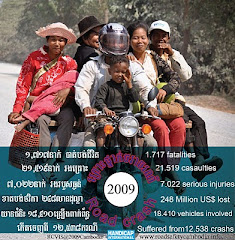Background
Every child in the world matters. Th e landmark
Convention on the Rights of the Child, ratifi ed by almost
all governments, states that children around the world
have a right to a safe environment and to protection
from injury and violence. It further states that the
institutions, services and facilities responsible for the
care or protection of children should conform with
established standards, particularly in the areas of safety
and health. Safeguarding these rights everywhere is not
easy, but it can be achieved by concerted action. Children
are exposed to hazards and risks as they go about their
daily lives and are vulnerable everywhere to the same
types of injury. However, the physical, social, cultural,
political and economic environments in which they live
diff er greatly. Th eir particular environments are thus
very important.
Th is chapter provides an overview for the report. Th e
fi rst section sets the scene, examining why child injury is
important, how the issue relates to other concerns about
children, and why there is an urgency to tackle it. Th e
second section examines major features of the problem:
the multiple types and causes of injury to children, and
the associations between injury and age, gender and a
range of socioeconomic factors. Th e third section seeks
to show that child injury is preventable. It describes the
principles of injury prevention, the types of approaches
that are successful and the problem of adapting proven
interventions to diff erent settings. It also discusses the
cost and cost-eff ectiveness of interventions to prevent
child injury. Th e fi nal section summarizes some of the
obstacles in this fi eld and the approaches to overcoming
them.
What is an injury?
Th roughout the report, an injury is defi ned as “the
physical damage that results when a human body is
suddenly subjected to energy in amounts that exceed the
threshold of physiological tolerance – or else the result of a
lack of one or more vital elements, such as oxygen” (1). Th e
energy in question can be mechanical, thermal, chemical
or radiated.
As discussed in the introductory section, the focus of
this report is on unintentional injuries: traffi c injuries,
drowning, poisonings, burns and falls. For more
information on intentional injury, see the World report on
violence against children.
Who is a child?
Th is report uses the defi nition of the United Nations
Convention on the Rights of the Child, Article 1: “a child
means every human being below the age of 18 years” (3).
Other concepts related to children, though, are more fl uid.
“Childhood” is a social construction, whose boundaries
shift with time and place (4, 5) and this has implications for
vulnerability to injury. A 10-year-old in one country may
be protected from economic and domestic responsibilities,
but in another country these tasks may be the norm and
considered benefi cial for both the child and the family (6).
Th us, childhood and developmental stages are intertwined
with age, sex, family and social background, school, work
and culture (6, 7). Rather than being rigidly measured,
they should be viewed through “context, culture and
competences”
Why is child injury important?
Childhood injury is a major public health problem that
requires urgent attention. Injury and violence is a major
killer of children throughout the world, responsible for
about 950 000 deaths in children and young people under the
age of 18 years each year (WHO Global Burden of Disease:
2004 update). Unintentional injuries account for almost
90% of these cases. Th ey are the leading cause of death for
children aged 10–19 years. Table 1.1 shows the contributions
that the various types of unintentional injuries make to the
leading causes of death among children. Road traffi c injuries
alone are the leading cause of death among 15–19-yearolds
and the second leading cause among 10–14-year-olds.
In addition to the deaths, tens of millions of children
require hospital care for non-fatal injuries. Many are
left with some form of disability, oft en with lifelong
consequences. Table A.2 in the Statistical Annex shows
the leading causes of disability-adjusted life years (DALYs)
lost for children aged 0–14 years, with road traffi c crashes
and falls ranking in the top 15 causes.
Th e burden of injury on children falls unequally. It
is heaviest among the poor with the burden greatest on
children in the poorer countries with lower incomes (see
Table A.1 and A.2 in the Statistical Annex). Within all
countries, the burden is greatest on those from low-income
families. Overall, more than 95% of all injury deaths
in children occur in low-income and middle-income
countries. Although the child injury death rate is much
lower among children from developed countries, injuries
are still a major cause of death, accounting for about 40%
of all child deaths (WHO Global Burden of Disease: 2004
update).
Resource: World Child Prevention report
Deftones discography
-
Studio albums: proper source
← Previous revision Revision as of 11:45, 1 September 2025
Line 84: Line 84:
|
|
*RIAA: Platinum
*RIAA: P...
2 hours ago

No comments:
Post a Comment